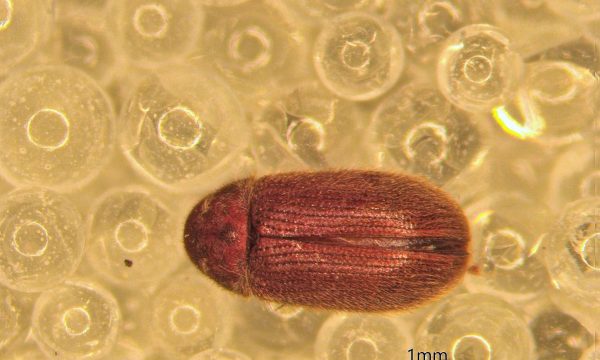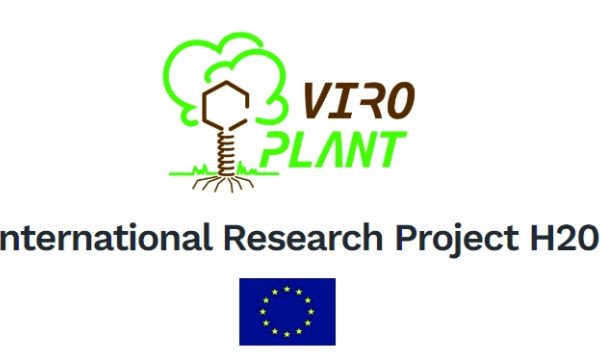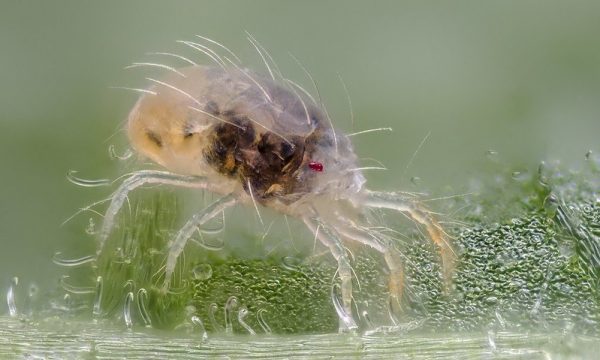News How pests steal genes to neutralize plant toxins

Some insects and mites steal genes from other organisms to make themselves immune to plant toxins. An understanding of this evolutionary trick could yield more sustainable crop protection.
Anyone who enjoys vegetable gardening knows that growing fruits and vegetables is also a battle against diseases and pests that damage your beloved plants. Insects and mites, for example, feed on the chlorophyll of these crops. This is not only a worry for enthusiasts, but also for professional growers.
Fortunately, plants don't let themselves die that easily. Some crops produce poison, for example, to ward off harmful insects. The pests in turn respond, sometimes with very special weapons. For example, there are pests that steal genes to render the plant toxins harmless. Scientists are studying how to use those stolen genes to give crops an advantage in this arms race between plants and pests.Gene thieves
Stealing genes, or "horizontal gene transfer" (HGT) is the process by which hereditary material, DNA, is exchanged between organisms without a family relationship between the two. The phenomenon was first described for bacteria more than fifty years ago. Today, traces of a stolen gene are found in every bacterium. Scientists also consider gene theft to be the driving force behind the rapid spread of antibiotic resistance in bacteria.

For eukaryotes - organisms with a cell nucleus, such as plants and animals - evidence of gene theft was previously scarce, but the last decade has seen some catching up on that front. Aphids and the bean spider mite were found to have stolen a gene from fungi that enabled them to make their own carotene, a building block of vitamin A. Herring borrowed a gene from another species of fish that makes the latter more resistant to the cold. And scientists discovered that a beetle can digest coffee berries thanks to a stolen bacterial gene.
The thefts described above could only come to light because a genome sequence - the complete collection of hereditary material - was available for these organisms. Through the genome one can easily compare genes with those of conspecifics, as well as with genetic material from distantly related organisms. It is important, however, that the genome is assembled correctly.
For example, the Proceedings of the National Academy of Sciences USA, a highly regarded scientific journal, reported that a moss bear had stolen more than 15% of its genes. A year later, scientists brought this down to 1% and found that the faulty analysis was due to the failure to remove contaminating bacterial DNA during genome assembly. A great example of how scientists are critical of each other's work and perhaps also a good argument that, before publishing, scientific findings should be reviewed by a large crowd of scientists rather than a select club of researchers.
The bean spider mite
Back to the crop pests that give growers a lot of sleepless nights. In 2011, the genome of the bean spider mite, a difficult pest to control on tomatoes and roses, was fully clarified. Thanks to the spider mite genome, scientists at Ghent University discovered that spider mites had stolen many genes from bacteria and had then built them into their own genome.
To get an idea of the function of one of those bacterial genes, the Belgian researchers first looked for similar genes whose function was known. Then they produced the corresponding protein from the stolen spider mite gene and tested whether it could perform the same reactions as the proteins described earlier. The results were spectacular: the spider mite protein turned out to be an enzyme, beta-cyanoalanine synthase or CAS for short, capable of rendering hydrogen cyanide or prussic acid harmless.
Prussic acid is a well-known but highly toxic substance that blocks the cell's energy production. Among other things, the substance turns up in Sparkling Cyanide, a detective novel by Agatha Christie, or as the poison with which the war criminal Slobodan Praljak committed live suicide during his trial. However, prussic acid is also released - from substances called cyanogenic glycosides - when pests feed on plants such as clover or passion flower. So the spider mite can make good use of the stolen CAS enzyme to neutralize this released deadly substance.
Curiously, not only spider mites were found to have stolen the CAS gene, but also some butterflies. Moreover, a species of butterfly that can only live on passion flower, a true prussic acid bomb, even had multiple copies of the CAS gene, underlining once again the importance of the CAS enzyme as a powerful detoxification weapon.The tobacco white fly
Stolen genes do not always have to come from bacteria, as shown this year by a study on the tobacco whitefly or Bemisia tabaci (photo at top of this article), in which ILVO was a partner. This serious pest turned out to have played the evolutionary trick on a plant gene. Thanks to this gene, the intestines of the fly produce an enzyme that neutralizes the toxic defenses of a plant. Painstakingly, to demonstrate the function of the enzyme, scientists had to isolate the intestinal tract of more than 10,000 white flies that are only a few millimeters in size.
To show the function of the stolen gene, the intestinal tract of more than 10,000 white flies were isolated
More interesting in terms of a possible fight against the animal was an experiment in which tomato plants were genetically modified. These genetically engineered plants actually produced substances that break down the stolen plant gene of the whitefly - also known among specialists as an RNA interference experiment. One week after the experiment began, almost all whiteflies had died on the genetically modified plants, while mortality on unmodified plants was limited. Since only the tobacco whitefly had stolen the plant gene, the genetically engineered plants were also highly selective and thus had no effect on non-target organisms.
This selectivity is in contrast to the broad-spectrum pesticides commonly used in crop protection. Knowing that the control of the tobacco whitefly costs billions of euros per year worldwide and that the European government aims to reduce the use of pesticides by 50% by 2030, such selectively resistant plants could well be the solution for future, environmentally friendly crop protection. It would only further the search for stolen genes in pests, or how catching thieves can ultimately pay off for crop protection as well.
Scientific publications:
https://www.nature.com/articles/s41579-021-00650-4
https://www.nature.com/articles/nrmicro.2017.137
https://www.pnas.org/content/114/29/E5871
https://www.science.org/doi/abs/10.1126/science.1187113
https://www.cell.com/trends/genetics/fulltext/S0168-9525(21)00051-2
https://www.pnas.org/content/109/11/4197
https://www.pnas.org/content/113/18/5053
https://elifesciences.org/articles/02365
https://onlinelibrary.wiley.com/doi/10.1111/imb.12374
https://www.cell.com/cell/fulltext/S0092-8674(21)00164-1
https://link.springer.com/article/10.1007/s10340-020-01238-2
https://ec.europa.eu/food/plants/pesticides/sustainable-use-pesticides/farm-fork-targets-progress_en


